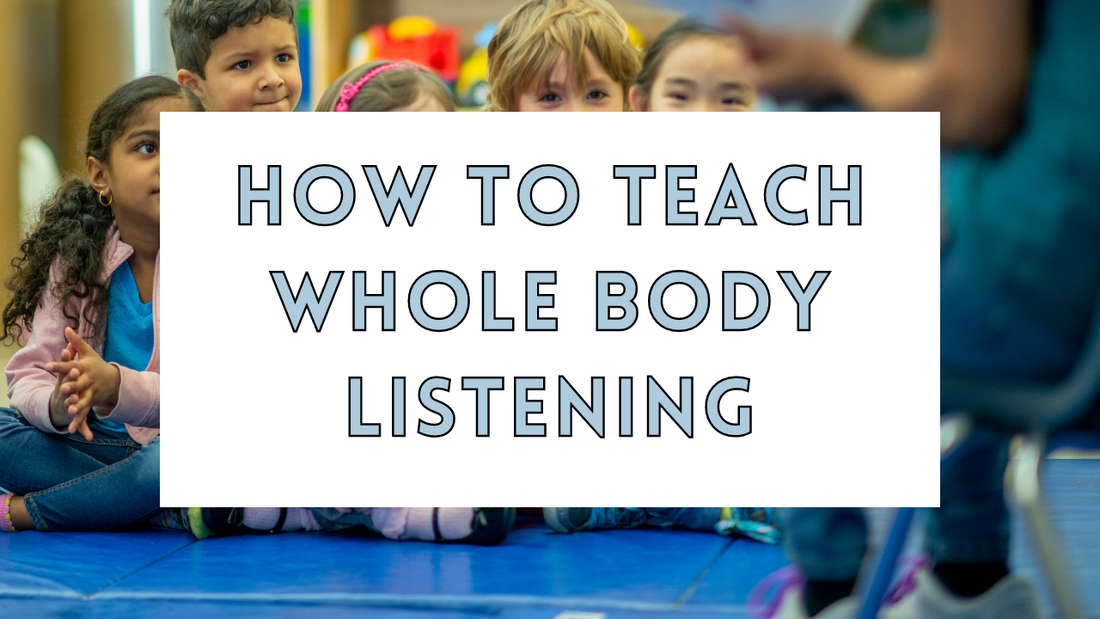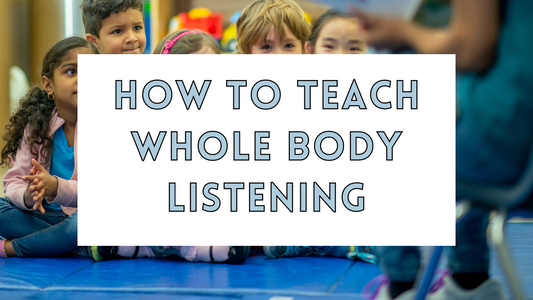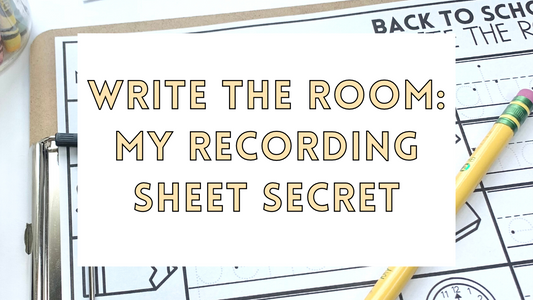When you think of the phrase "whole body listening," what comes to mind?
For many, it's teaching children how important paying attention and listening to others is through maintaining eye contact or staying still.
While these skills are an important part of success in the classroom, being too stringent in our practice of whole body listening ignores how complex of a task it is for students.
Let's explore whole body listening and how to teach it effectively in your kindergarten classroom.
I'm confident this guide will help you teach this multi-layered skill to create a classroom of whole body listeners!
History of Whole Body Listening
The core concept of Whole Body Listening comes from speech pathologist Susanne Truesdale who sought to simplify how we teach kids listening skills.
Truesdale's impactful tool breaks down the most abstract and challenging parts of listening by giving every body part a role in active listening.
The brain thinks about the words being spoken; the eyes are focused on the speaker; the mouth is quiet; the body faces the speaker; and the hands and feet stay calm and quiet.
Truesdale noted that an essential part of Whole Body Listening takes part in the brain.
In its simplest sense, this concept is centered around the listener's brain actively engaging with what's being said.
Fun fact:
Whole Body Listening is inspired by a 1989 conversation Truesdale had with her own first-grade class about the differences between "hearing" and "listening."
Teaching Whole Body Listening
Now that you know the history and general concept of whole body listening, let's explore step-by-step how you can teach it to your students!
I'm approaching this guide as a kindergarten teacher, but the practice can work for almost any young learner.
Step 1: Read and talk with students about listening
Before introducing my students to whole body listening, I read Listen and Learn from the Learning to Get Along series.
It's a great introduction to listening skills and helps them identify what a whole body listener is.
After reading the book together, I ask students to share what listening looks like.
Step 2: Make a listening skills list
Now that students are aware of what good listening skills might look like, we're ready to write out those skills by focusing on different parts of the body.
I work with students to identify the following traits of whole body listening:
A brain thinking, a heart caring, safe hands, eyes looking, ears listening, a quiet mouth, and a safe body.
This gives our community defined characteristics for what whole body listening looks like.
It also allows us to notice and name these behaviors throughout the day.
Reinforcing whole body listening this way helps students learn how they can show their listening skills in the classroom.
Step 3: Reinforce listening skills with activities
After reading about whole body listening and discussing what listening skills look like, we're ready to reinforce the concept with hands-on activities.
I like to invite students to work in table teams to complete puzzles centered around listening skills.
Each puzzle shows a picture of students demonstrating one of the listening skills we discussed and listed.
It's a fun activity that my students always enjoy!
Step 4: Do a gallery walk
With their puzzles completed, my students do a gallery walk around the classroom to see all the puzzles and look for examples of whole body listening from our list.
Now that they're becoming familiar with what whole body listening looks like, we can add a focus on how we can take care of one another through listening skills.
Step 5: Complete a whole body listening worksheet
We're not done reinforcing whole body listening just yet!
Next, my students are invited to complete a whole body listening worksheet that restates our listening skills and illustrates what whole body listening involves.
If you're looking for a template to work with, check out my Whole Body Listening Posters on TpT that include puzzles, worksheets, and more!
Step 6: Create a whole body listening poster for the classroom
Finally, we create a class poster as a group with a picture of young learners on the rug.
To start, students trace the words 'WE CAN LISTEN CAREFULLY' and attach them to poster.
We then look for and label the brain thinking, eyes looking, ears listening, mouth quiet, and body safe.
Step 7: Be flexible with your whole body listening skills
One of the most important parts of whole body listening is understanding it's much more than telling students to be still or completely quiet.
Good listening is about being in a position that helps your brain focus and your heart to care.
I like giving my students options when it comes to using their body parts to show they're listening.
For example, they can sit in a mountain pose, criss-cross, or in a mermaid position.
When it comes to eye contact, I reinforce they should look at the speaker when they're pointing or showing something.
I'm not expecting them to keep their eyes glued on the speaker at all times and some students listen better when they're not looking.
Being flexible and providing options when it comes to listening skills will help ensure success when you teach this concept in the classroom.
Final Thoughts
Whole body listening is an important part of academic success, social communication, and behavior management.
Students are more than capable of being great whole body listeners, but staying flexible with our practice as teachers makes for a much smoother process as students are learning.
If you're looking to get a head start on your whole body listening lesson, check out my Whole Body Listening Posters on TpT!
It includes the exact class poster, puzzles, and worksheets I use in my own classroom.
Remember that whole body listening looks a little different in every classroom, but practicing the core concept will improve your classroom community and create a safe, fun learning environment for everyone.








